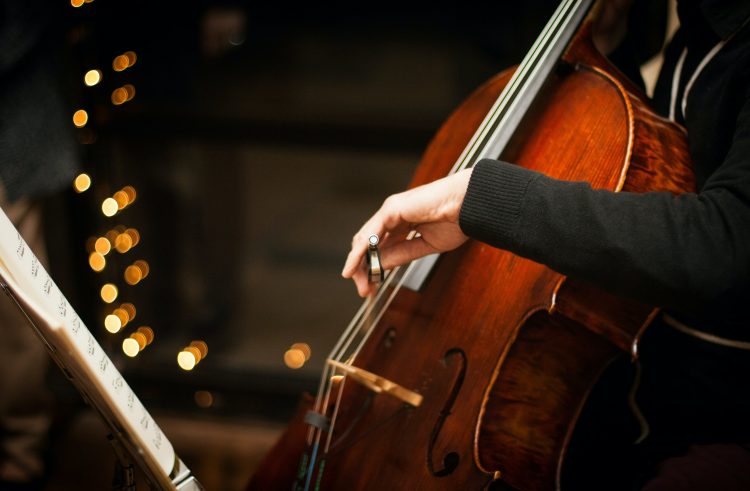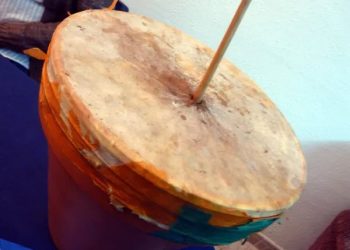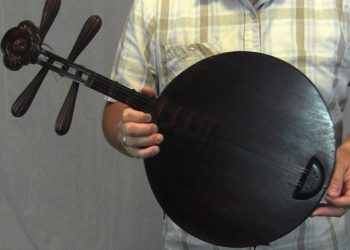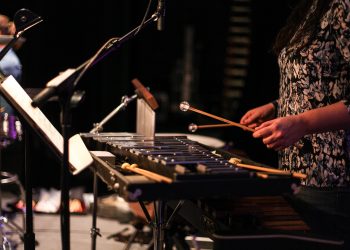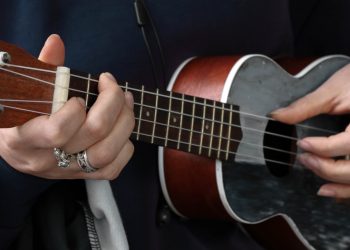Music is an art form that has been a part of human civilization for thousands of years. It has the power to bring people together, express emotions, and convey stories. Musical instruments are the tools that musicians use to create the beautiful sounds that we enjoy. From the percussive beat of drums to the melodic tones of a flute, each instrument has its own unique sound and character.
In this article, we will be exploring the top 15 musical instruments that start with the letter C. These instruments come from a wide range of musical genres and cultures, and each has its own distinct sound and playing technique. Whether you are a music enthusiast or a budding musician, this list is sure to expand your knowledge and appreciation of the diverse world of music.
We will be covering a range of instruments, from traditional to contemporary. Some of these instruments have been around for centuries, while others are more recent additions to the musical landscape. The list includes stringed instruments like the cello and guitar, as well as brass and woodwind instruments like the clarinet and cornet. We will also be looking at lesser-known instruments like the cheng, a Chinese stringed instrument, and the cajón, a percussion instrument from Peru.
No matter what your musical tastes are, this list is sure to have something that will pique your interest. So, sit back, relax, and get ready to discover the top 15 musical instruments that start with the letter C.
1. C Soprano Saxophone
The soprano saxophone is a unique and versatile instrument. It’s one of the most popular wind instruments in jazz, pop, classical, and Latin music today. With its mellow yet powerful sound, it’s easy to understand why the soprano sax has become such a staple in so many genres.
When playing the soprano saxophone, there are some key techniques that must be taken into account. These include proper embouchure — or how you hold your mouth when blowing air through the reed — as well as finger placement on the keys and correct breathing technique. Proper practice will ensure an optimal sound quality from this instrument.
In order to learn how to play the soprano sax effectively, a musician should take lessons with a qualified instructor who can provide guidance on proper technique and repertoire selection. There are also several online resources available for those interested in learning more about playing this iconic instrument. From instructional videos to audio recordings of famous performances, these tools allow budding musicians to hone their skills without ever leaving home.
Soprano saxophones have been around since the late 19th century and remain popular today due to their versatility and wide range of musical possibilities. Whether used for traditional jazz standards or modern-day rock hits, this low-pitched woodwind instrument continues to inspire generations of players worldwide.
2. Cajon
To move away from the traditional wind instruments, another popular choice is the cajon. This small drum-like instrument has grown in popularity over recent years and brings a unique element to any musical performance. The cajon is played by sitting on top of it while striking its surface with hands or sticks. It’s perfect for adding percussion to acoustic music, as well as being used as an accompaniment instrument in larger bands.
In terms of playing technique, mastering the basics can be done fairly easily but there are also many nuances that can be explored depending on personal preference. Learning how to play different patterns and rhythms takes practice and experience which can only come through regular use of the instrument. There are plenty of online tutorials available too, so anyone wanting to get started should have no trouble finding appropriate guidance.
The versatility of the cajon makes it great for all kinds of genres — from folk to blues and rock n’ roll — but one place where this instrument really shines is Latin music. Its ability to create complex beats and grooves perfectly complements salsa, merengue, bachata, samba and more! It lends an authenticity to these styles that few other instruments can replicate in quite the same way.
No matter what style you’re looking to explore with your cajon playing, whether solo or within a band setting – having patience and dedication will always pay off when learning this fun yet challenging instrument. With consistent practice even beginners can pick up enough skills quickly enough to start jamming along with their favorite songs!
3. Calliope
Moving on from the cajon, another instrument that brings a unique sound to any musical performance is the calliope. Unlike many other instruments, this one doesn’t require you to have any special skills — just press down the keys and out comes an almost magical melody! It’s known for its distinctive high-pitched sound, which can be heard in carnivals and amusement parks around the world.
Calliopes come in various sizes and shapes; from large versions with multiple keyboards to smaller ones with only one keyboard. The larger versions are typically played by two people at once – each playing different notes across both keyboards – while the smaller models are usually used as solo instruments. Regardless of size or type, mastering a calliope does take some practice but it’s not too difficult if you’re willing to put in some time.
When it comes to actually playing a calliope, timing and accuracy are essential since even small mistakes can ruin a piece of music. That said, it’s also important to keep your focus while playing so that you don’t get distracted by outside noises or events happening around you. This kind of concentration helps ensure that all notes come out clear and precise every single time.
The versatility of the calliope makes it great for creating lighthearted ditties or more complex pieces depending on what style of music you want to play. Whether using traditional tunes or coming up with something completely new – when mastered properly, this seemingly simple instrument has endless possibilities!
4. Carillon
The carillon is another instrument that brings a unique sound to any performance. Though it may look like a set of bells, the carillon is actually made up of large metal tubes connected to wooden or metal keyboards. Unlike calliopes, this instrument requires skill and technique – making it one of the more challenging instruments to learn. But with practice and patience, mastering the carillon can be an incredibly rewarding experience!
Carillons come in various sizes; from larger versions with multiple rows of keys to smaller ones with only one row of keys. The larger models require two people playing at once – each taking turns playing different notes on both sets of keys – while smaller models are usually used as solo instruments. On top of having a greater range due to its size, larger versions tend to have better tonal quality thanks to their heavier construction materials.
In order to get started playing the carillon, you’ll need several specialized techniques: damping ( pressing down on the keyboard lightly after playing), striking (hitting the key firmly but not too hard) and glissando (playing multiple notes quickly). You’ll also want to pay attention to your posture so that all notes come out clear without any unwanted sounds being produced by accident. Once these basics are mastered, you’re ready for more complex pieces!
Playing music on a carillon allows for endless creative possibilities — from traditional tunes to something completely new. With its wide range and dynamic tones, this instrument can produce anything from peaceful melodies to powerful symphonies depending on how it’s played. It takes time and dedication but when done right – it truly makes for an unforgettable musical experience!
5. Castanets
Taking a different approach to percussion, castanets offer an exciting way to create rhythm and energize any musical performance. Unlike the carillon, these instruments consist of two small shells hinged together that are held in one hand and struck against each other with the opposite hand. The result is a distinct click sound that can be heard throughout a room – making it perfect for accompanying lively dances or adding texture to songs.
Using castanets requires good coordination between both hands as well as careful control over your speed and volume. You’ll want to practice striking them evenly while keeping your movements steady so they produce clear sounds without missing or overlapping beats. Once you’ve got the basics down, you can start experimenting with new rhythms such as syncopations and rolls!
Castanets also come in various shapes, sizes, and materials; from traditional wooden models to modern synthetic ones. Each type has its own unique sound which adds even more character to your music – allowing for endless possibilities when crafting melodies and harmonies. No matter what style of music you’re playing, having a set of castanets at your disposal will provide plenty of opportunity for creativity!
So if you’re looking for a fun yet challenging instrument to learn, why not give castanets a try? With their joyful clicks and vibrant tones – this percussion instrument is sure to bring an extra layer of excitement to any performance!
6. Celesta
Taking a different approach to creating melodic music, the celesta is a keyboard instrument that produces a beautiful, bell-like sound. This delicate yet powerful noise can be used to add depth and emotion to any musical arrangement. Unlike castanets, this instrument uses metal bars instead of shells – producing gentle notes with each press of the keys.
The celesta has been featured in many classical compositions throughout history – from Debussy’s Clair de Lune to Tchaikovsky’s Dance of the Sugar Plum Fairy. Its unique tone provides an interesting contrast to other instruments such as strings or woodwinds; helping create captivating harmonies and melodies.
Playing the celesta requires good finger dexterity as well as control over your speed and dynamics. It’s important to practice pressing down on the keys evenly while keeping your movements steady so they produce clear sounds without missing beats or overlapping tones. Once you’re comfortable with basic techniques, you can start experimenting with different rhythms like syncopations and rolls!
With its soft timbre and wide range of possibilities, incorporating a celesta into your performances will give them extra energy and emotion. So if you want to try something new and exciting, why not pick up one today? You’ll be sure to find plenty of ways to use it in all sorts of genres – making for an unforgettable experience every time!
7. Cello
Adding a unique, warm resonance to any ensemble, the cello is an instrument that produces beautiful tones with its large strings and hollow body. Its deep yet delicate sound has been used in classical music for centuries – from Bach’s Cello Suites to modern pieces like Yo-Yo Ma’s The Swan. Not only does it bring grandeur to compositions, but it also adds a softer touch than other stringed instruments such as violins or harps.
Playing the cello requires patience and practice; you must learn how to pluck each string correctly so they produce clear notes without buzzing noises. You’ll also need to develop your control over vibrato, slurs and glissandos – all of which help give your performance more character and emotion. Additionally, learning proper posture will ensure you don’t strain yourself while playing long passages – keeping your arm close to your body at all times!
The versatility of the cello makes it perfect for many genres including jazz, folk, rock and blues. Whether you’re accompanying a singer or creating intricate solos, this instrument can do it all! Plus, its portability means you can take it anywhere – making it ideal for both studio recording sessions and live performances alike.
In short, the cello provides an exciting way to express yourself musically – allowing you to explore new sounds and combinations every time you pick up the bow! With its rich tonal palette and range of techniques available, there’s no limit to what kind of music you can make with this wonderful instrument. So why not try one today?
8. Charango
The charango is a traditional stringed folk instrument originating from the Andes Mountains of Latin America. Often compared to the ukulele, its smaller size and higher pitch make it perfect for creating lively rhythms. This colorful little guitar has five courses of strings – each tuned in unison or octaves – giving it an unmistakable sound that’s both bright and twangy!
Besides being used as an accompaniment instrument, the charango can also be plucked like a mandolin to create beautiful melodies. Thanks to its fretless design, you can easily slide between notes without having to worry about hitting any wrong ones. Additionally, this allows you to bend notes just like on a blues harmonica! On top of all that, playing the charango requires minimal hand movement; meaning your fingers will stay nimble no matter how long you play.
Due to its unique tonal qualities, the charango is often found in genres such as mariachi music and cumbia. But don’t let that stop you from exploring other styles too! You could even try fusing different genres together by adding some jazz licks or reggae beats into your compositions. Plus with so many sizes available, there’s sure to be one that fits perfectly in your hands – making every performance feel comfortable and natural.
Whether you’re looking for something new to learn or want to add some flavor to existing songs, the charango is definitely worth trying out! With its small body and vibrant colors, this charming little instrument provides endless possibilities for musical exploration. So why not grab one today?
9. Chimes
Chimes are an essential part of any musician’s arsenal. With their soft ringing tones and shimmering soundscapes, they can add a truly magical quality to your musical compositions. Not only do chimes provide the perfect accompaniment for other instruments, but their portability allows them to be used in virtually any setting – both indoors and outdoors.
From small hand-held models to larger sets with multiple tubes, there is an array of different styles available on the market today. Whether you’re looking for something gentle and melodic or loud and powerful, these instruments have plenty to offer musicians of all levels. Plus with various tuning options like pentatonic scales and overtone series, you’ll never run out of creative possibilities!
Another great thing about chimes is that they don’t require much physical effort when played. All it takes is a few taps from a mallet or stick to create lush layers of sound that resonate for extended periods of time. This makes them ideal for performers who want to focus more on expression than technique during their performances.
However you choose to use them, chimes will definitely bring some extra sparkle into your music-making sessions. So why not give them a try? From soothing atmospheres to soaring solos, these delightful instruments just might become one of your favorite tools for crafting beautiful music!
10. Cigar Box Guitar
If you’re looking for something a little more unique and rustic, the cigar box guitar might be just what you need. This homemade instrument is made from an old wooden cigar box, strings, and other simple materials – making it not only easy to construct but also quite affordable. The result is an earthy-sounding acoustic guitar with a warm tone that’s perfect for country, blues, or folk music.
Unlike traditional guitars, these instruments have no frets so playing them requires some creativity on your part. You’ll need to get familiar with slide techniques such as hammering-on and pulling-off in order to really make use of its full tonal range. But don’t worry if this sounds like too much work; mastering the basics can take surprisingly little time!
Another great thing about cigar box guitars is that they come in all shapes and sizes depending on how many strings you want to use and which tuning you prefer. Plus since each one is handmade by a craftsman, yours will always be completely unique – adding even more character to your sound. From classic delta blues numbers to modern rock riffs, this instrument has plenty of potential uses!
No matter what style of music you plan on creating, the cigar box guitar offers something special that other stringed instruments simply can’t match. Its raw appeal makes it both fun and inspiring to play; plus it looks cool too! So why not give it a try? You never know where your next musical adventure may lead!
11. Cimbasso
While the cigar box guitar is certainly a unique instrument, there’s another option that’s even more unusual: the cimbasso. This little-known instrument looks like a cross between tuba and trombone, but it has its own distinct sound. Its low register tones add depth and warmth to any musical arrangement – making it an excellent choice for jazz, classical music, or film scores.
The cimbasso is usually constructed from brass tubing with several valves and slides which allow you to control pitch and volume. It also comes in various sizes so finding one that fits your needs shouldn’t be difficult. Plus since these instruments are relatively rare, owning one will make you stand out in any ensemble!
Playing this instrument takes some practice as well as good breath support; however mastering proper technique can open up a whole new world of sounds. The cimbasso has such great versatility that you’ll find yourself using it in all kinds of settings – whether you’re playing big band tunes or accompanying a soloist on stage.
If you want to expand your sonic palette by adding something both unique and powerful to your repertoire, then the cimbasso should definitely be at the top of your list. With its deep tone and expressive range, this instrument can bring life to any piece of music – no matter what genre it may be. So why not give it a try? You won’t regret it!
12. Clapper
The clapper is another instrument that has long been used to add a unique sound to any musical arrangement. This simple percussion instrument consists of two sticks, usually made from wood, which are struck together to produce a booming ‘clap’ noise. It’s an incredibly versatile tool – providing both rhythm and texture in many genres of music.
But it doesn’t just have to be used for traditional purposes; with some creativity you can use the clapper to create interesting new sounds too! Try experimenting by striking different objects like books or boxes and adding other instruments into the mix such as drums or cymbals. You’ll be surprised at how much diversity this humble instrument can bring to your music-making.
Plus, learning how to play the clapper isn’t too difficult either. With practice and dedication, anyone can become proficient in no time at all. And once you’ve mastered basic technique, why not move on to more complex rhythms? There are so many possibilities when it comes to crafting dynamic beats with the help of this deceptively simple instrument.
At first glance it may seem like there’s nothing special about the clapper – but don’t let its simplicity fool you! With enough imagination and skill, this classic percussive tool can inject energy and excitement into any musical piece. So go ahead and give it a try – you won’t regret it!
13. Clapsticks
Building on the clapper, another great percussion instrument to add rhythm and texture to music is the clapstick. Clapsticks are two thin sticks, usually made from wood or bamboo, that when struck together create a sharp ‘clack’ sound. This unique sound can be used in many genres of music including pop, folk, rock and more!
The beauty of the clapstick lies in its versatility; you can do so much with just these two simple sticks. Whether it’s playing intricate rhythms or providing background accompaniment for vocalists, the possibilities are endless. Plus, anyone can learn how to play them – all you need is some practice and dedication! You’ll soon find yourself creating complex beats and arrangements using nothing but your own hands.
Just like with any other instrument, once you get comfortable with basic technique there are plenty of ways to take things further. Try experimenting with different speeds and patterns as well as adding in other instruments such as drums or cymbals. The results will surprise even the most experienced players!
Percussion instruments like the clapper and clapsticks offer an exciting way to enhance a musical piece. Their simplicity belies their ability to bring energy and life into any arrangement – making them invaluable tools for musicians everywhere. So why not give them a go? Who knows what kind of amazing sounds you could discover?
14. Clarinet
Moving on from the clapper and clapsticks, let’s take a look at another versatile instrument: the clarinet. This woodwind instrument is renowned for its smooth sound and ability to play various genres of music, making it an ideal choice for those looking to expand their musical arsenal. From jazz and classical to rock and pop, the clarinet can provide just the right amount of depth and complexity to any piece.
Using a clarinet requires skill and technique – you have to learn how to control your breath, use different fingerings, create vibrato effects with your hand position and more. But once you get the hang of it, playing this beloved instrument will be like second nature! You’ll soon find yourself exploring all kinds of new sounds that only a skilled player could make.
Of course, learning how to perform solos or intricate melodies takes time; but even if you’re just starting out there are still plenty of ways to enjoy the beauty of the clarinet. Anyone can join in on a group performance by providing accompaniment for singers or other instruments – no matter what level of experience you may have!
So why not give it a try? With some practice and dedication, you too can discover the joys of playing this wonderful instrument. Who knows what kind of amazing music you might be able to create?
15. Clavichord
Stepping away from the reed instrument of the clarinet, let’s explore another type of keyboard-based instrument: the clavichord. This ancient stringed instrument is known for its delicate, soft sound and has been used in music since medieval times. Unlike other instruments that rely on air pressure to produce a tone, the clavichord relies on the player striking strings with small metal blades called tangents – making it one of the most expressive musical tools around!
The beauty of playing this unique instrument lies in its versatility; you can use it to perform everything from intricate classical pieces to modern jazz tunes. As long as you have an understanding of how chords are constructed and how they interact with each other, you’ll be able to play some truly beautiful melodies. And if you’re looking for something a bit more challenging? You can always experiment with unconventional tunings or try your hand at improvisation!
Of course, there will likely be a learning curve as you get acquainted with the clavichord. But don’t worry – once you understand its nuances, no matter what genre of music you prefer, adding a bit of clavichord magic into your repertoire will make all your performances come alive.
So why not give it a go? Relearn those forgotten chords or take up a new challenge – by exploring the sounds of the clavichord, who knows where your journey might lead?
